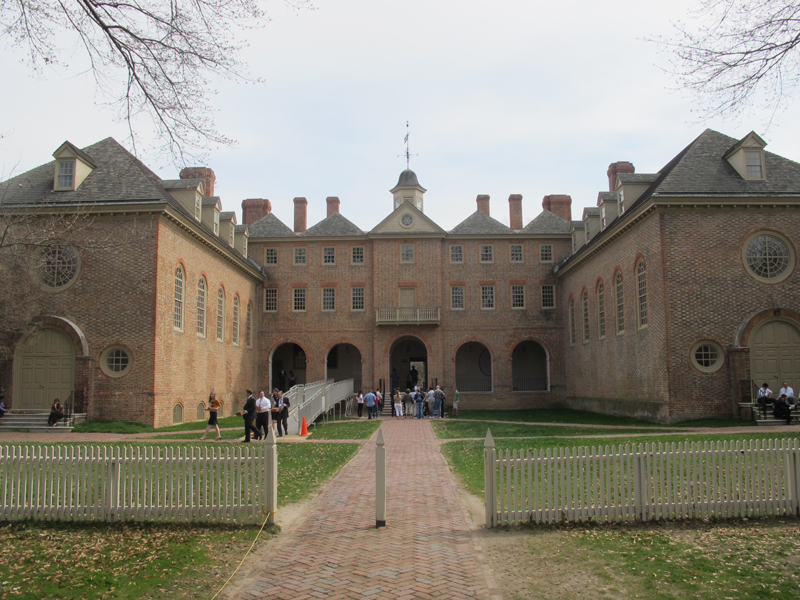The Office for Civil Rights held 12 focus groups Monday, Sept.15 and Tuesday, Sept. 16 in relation to the ongoing Title IX investigation of the College of William and Mary.
The focus groups divided students based on certain qualifiers per a request made by the OCR to the College. The College emailed students about the opportunity to be involved in the focus groups. The group categories as outlined in an email reminder from Student Affairs were as follows: varsity athletes (women), women (non-Greek), survivors and advocates, varsity athletes (men), men (non-Greek), fraternity men, Resident Assistants, racially/culturally diverse, LGBTQ, sorority women and two general “catch-all” sessions.
The OCR requested the types of students identified above and asked the College to organize the focus groups. Vice President for Student Affairs Ginger Ambler ’88 Ph.D. ’06 coordinated the focus groups and, as confirmed by Kiersten Boyce, Title IX Coordinator at the College, asked relevant staff members for lists of students who fell into the OCR’s categories.
“For reasons of confidentiality, in some instances the staff member forwarded the invitation to students in their areas as they deemed appropriate — that is, the invitations were not issued directly by the [Vice President for Student Affairs],” Boyce said in an email. “This approach was designed to help meet OCR request for mixed groups, meaning, for example, that the focus group of women would not be all sophomore, and that a male athlete group would not be all soccer players.”
Mike Walker ’16 participated in the fraternity men focus group after receiving an email which stated that a member of the College’s staff had recommended that he participate. Walker said his focus group was made up of five or six fraternity members, with only his own fraternity — the Zeta Upsilon chapter of Beta Theta Pi — represented by more than one student. Two representatives from the OCR moderated the groups.
“I was a little skeptical about the way they set up the groups to begin with, because it didn’t seem like it would be enough of a diverse group or population,” Walker said. “[After the fact], it makes a lot more sense from [the OCR] perspective because, basically, what they’re doing is they’re trying to assess what the policy and standards are, what needs to change to change the climate or reverse the climate we may or may not have. … I think it’s easy to think that William and Mary must have done something wrong. … It’s not that William and Mary has done something wrong, it’s more that there has been a complaint, or several, that [the College] might have done something wrong. … The Office of Civil Rights job is to see if these things are true or aren’t true.”
During the discussion, Walker said the group spoke about the methodology for separating students by organization. The OCR representatives, according to Walker, described the decision as twofold — one, to follow the precedent set by previous investigations into Title IX complaints at higher institutions and, two, to make it easier to understand the thoughts from segments of students rather than larger, open forums.
“It’s easier for them to come back to [headquarters] and say ‘We talked to this group of students. We talked to that group of students’ … rather than an open forum with a hundred people from different groups talking above each other,” Walker said.
Walker said the OCR representatives asked specific questions about the College’s general education on sexual assault and whether the fraternities had any policies in place for this type of education as well. Walker said other questions regarded campus’ atmosphere.
“[They asked] about what the overall sentiment is toward fraternities and athletic organizations in terms of culture … [and] whether there [were] any particular groups or places on campus where people generally don’t feel safe,” Walker said.
Boyce said these student-based queries are a typical second step in OCR investigations. The first step, according to Boyce, is requesting the necessary information: records, documents, policies, procedures, information on how the College disseminates those policies and procedures, and information on the specific incident under investigation. The College provided these materials throughout the spring and summer.
“We didn’t know exactly how [the OCR was] going to do it, but we did know that they wanted to come to campus and they wanted to speak to students,” Boyce said in an interview.
The next step in the investigation, as outlined by Boyce, is typically to speak to College staff and administrators. Boyce said that this is usually the last step in an OCR investigation and that the direct interaction with students phase appears to be over. The OCR may request more information, but they will typically analyze the information they have gathered after interviewing College administrators and staff.
“I think it’s important to emphasize that the approach we’ve always taken with OCR, not just with this investigation but with smaller investigations in the past, is [that] we don’t have anything to hide,” Boyce said in an interview. “I believe in their mission and what they have to do. … My belief is that we want to give them the best picture and the most accurate picture [of the College] that they can get because we want to get the most accurate outcome.”

